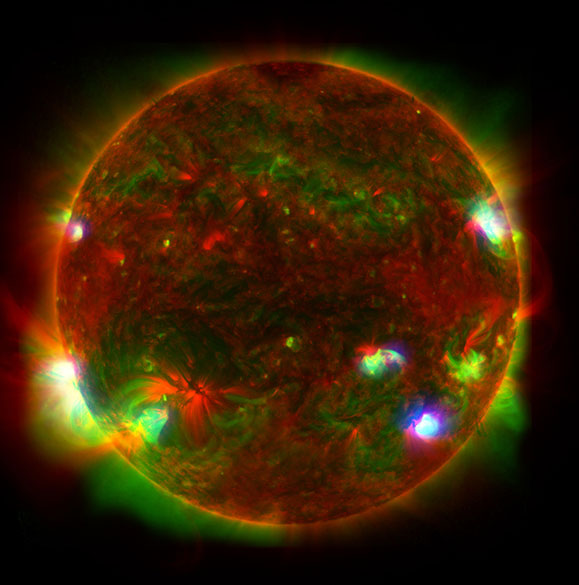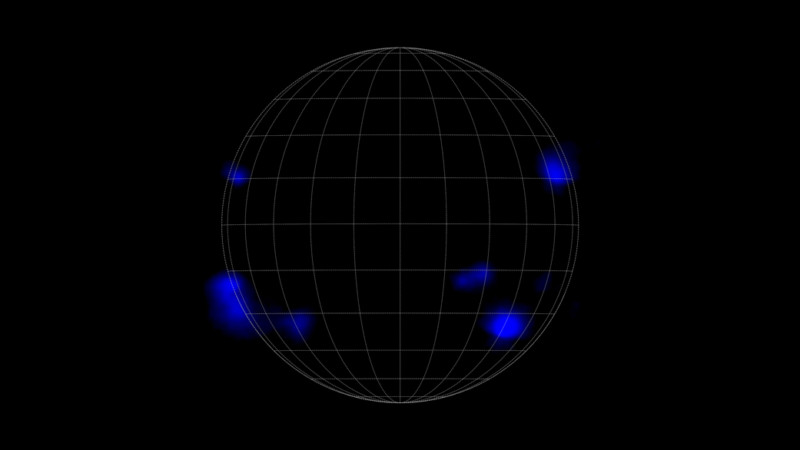Three Space Observatories Combine to Reveal the Sun’s Mystery

Three telescopes were pointed at the Sun to create this unique image that contains never-before-seen light.
The data from NASA’s Nuclear Spectroscopic Telescope Array (NuSTAR) is represented in blue and could reveal one of the biggest mysteries about the Sun — why does the outer atmosphere reach more than a million degrees?
The Sun’s outer atmosphere, called the corona, reaches temperatures 100 times hotter than its surface baffling scientists because the Sun’s heat originates from its core and travels outward.
How Can the NuSTAR Telescope Unlock the Sun’s Mystery?
Scientists speculate that the extreme heat in the Sun’s corona could be generated by nanoflares; small eruptions of heat, light, and particles.
Nanoflares are too faint to observe because of the Sun’s blazing light. But NuSTAR can detect light from the high-temperature material believed to be produced when many nanoflares occur close to one another.

In the image above, NuSTAR’s data can be seen in blue representing high-energy X-rays. NuSTAR’s relatively small field of view means it can’t see the entire Sun from its position in Earth’s orbit, so the image from NuSTAR is actually a mosaic of 25 images.
NuSTAR typically studies celestial objects outside of the solar system like massive black holes and collapsed stars but astronomers are hoping it will unlock the mysteries of the solar system’s biggest source of energy.

The other two telescopes used in the image are the X-ray Telescope attached to the Japanese Aerospace Exploration Agency’s Hinode mission represented in green, and the Atmospheric Imaging Assembly on NASA’s Solar Dynamics Observatory represented in red.
The three telescopes see the Sun very differently but combined together they help scientists understand more about the star.
Last week, PetaPixel reported on more solar mysteries after a satellite captured a chunk of the Sun’s northern pole breaking off into a vortex. Once again, scientists don’t understand why this happens.
Image credits:NASA/JPL-Caltech/JAXA.